
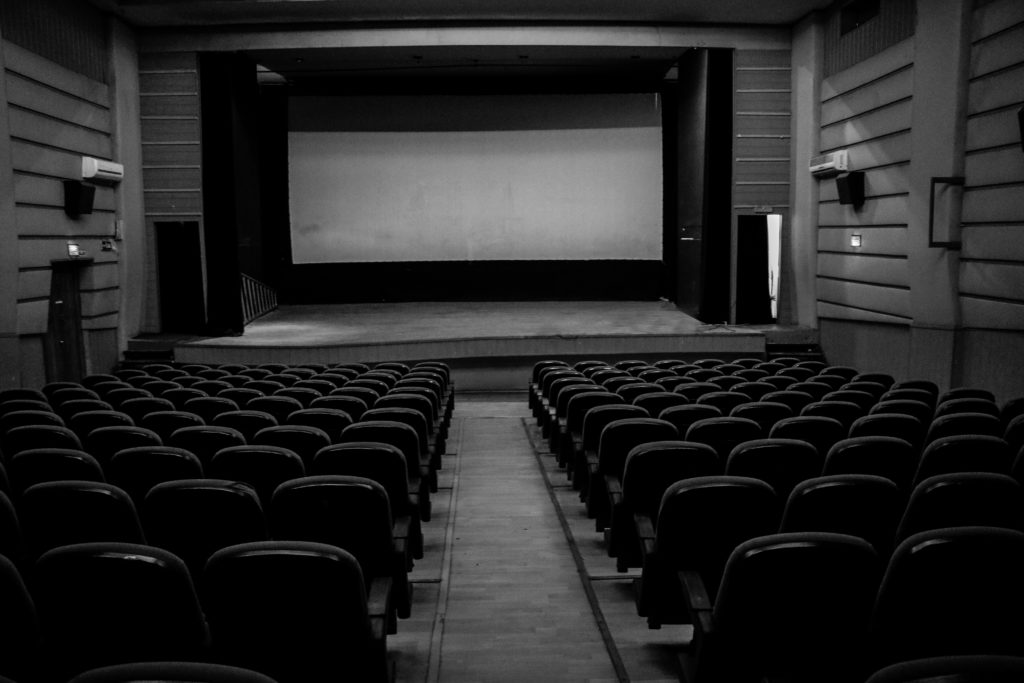
The "Jusuf Gervalla" Cinema, in the past known as Kino Rad (in Serbian for “Workers’ Cinema”) was built in 1955 with the money of the Workers’ Union. The cinema was a film screening enterprise under what was then called the Self-governing Community of Interest in Culture (SCIC).
The cinema building covers an area of 731m2 and is divided into several spaces including: the main hall, the projection room, the second floor balcony, some office space, lobbies and toilets.
The "Jusuf Gervalla" Cinema (formerly Kino Radi) was built in order to provide a cultural space in the city of Peja, whereas during the period 1955-1998 it served as a central point of joint cultural activities for the residents of the municipality of Peja, thus including screening of the latest films, public discussions about different films, music concerts, theatrical performances and children's programs, therefore becoming one of the most frequented cultural institutions of that time.
In 2016, the Privatization Agency of Kosovo (PAK) puts the building and all the assets of the "Jusuf Gervalla" Cinema on the list of building for privatization. The objection of this process by Anibar and the cooperation with the local community and the Network of Cultural Organizations (ROC) in Peja, which brought together 80 other non-governmental organizations throughout Kosovo, caused the process to be suspended.
Citizen commitment, besides saving cinema from privatization, contributed that the building be formally included in the temporary list of protected cultural heritage buildings. Today, "Jusuf Gervalla" Cinema has become a socio-cultural center and has weekly active programs.
The text is detached from the publication on the history of the Cinema.
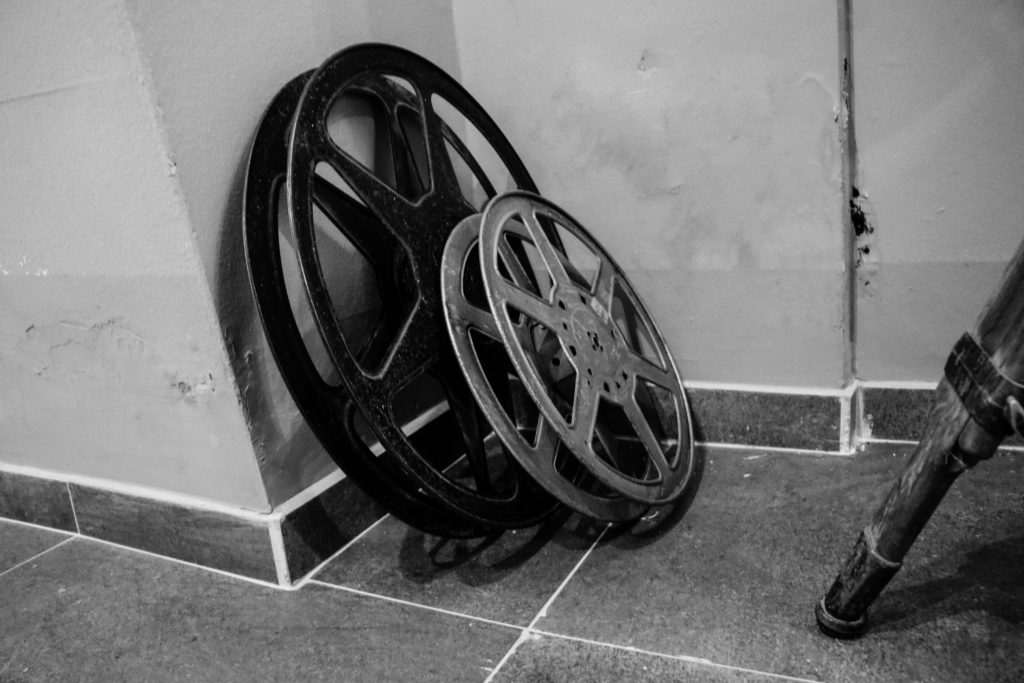
Films of different genres were screened in the Cinema or the Cinema-Theater or the Film as it was known by the residents of Peja. Different types of films have been screened throughout different periods, wherefore based on the posters that remain in the archives of the cinema, it can be noted that in the 1960s the films known as "Western" dominated, while in the 1970s there was a domination of Indian films of " Bollywood ”, due to the fact that“ Western ”films had gained worldwide fame, while Indian cinema films had also expanded to Kosovo.
In the 1980s, the domination of action films and the presence of Asian films in the genre were evident. Throughout the 1980s, the cinema screened science-fiction films mixed with action, which are still popular today, such as Robocop and Terminator.
Films that were screened in cinemas came thanks to the co-operation of an informal cinema network in the former Yugoslavia.
The film tapes provided for film screenings were carried throughout the cinemas of the former Yugoslavia, and some of these film tapes continue to be part of the cinema archive, left there out of the impossibility of being sent to other cinemas due to the onset of the crisis and the wars in the former Yugoslavia.
For a certain period, pornographic and erotic films were screened in the cinema too.
In addition to regular film screenings, concerts and performances by various theatrical and musical groups were often organized inside the cinema. Within the activities of the cinema are also remembered the artistic exchanges coming from Albania where often groups of folk ensembles came and organized different performances. Among the theatrical groups that visited the cinema were the theater troupe "Alexander Mojsiu" from Durrës or the theater troupe "Ndrek Luca". Besides the theatrical troupes, there were also screenings of films from Albania such as the film "Debatikët" by director Hysen Akani.
The text is detached from the publication on the history of the Cinema.
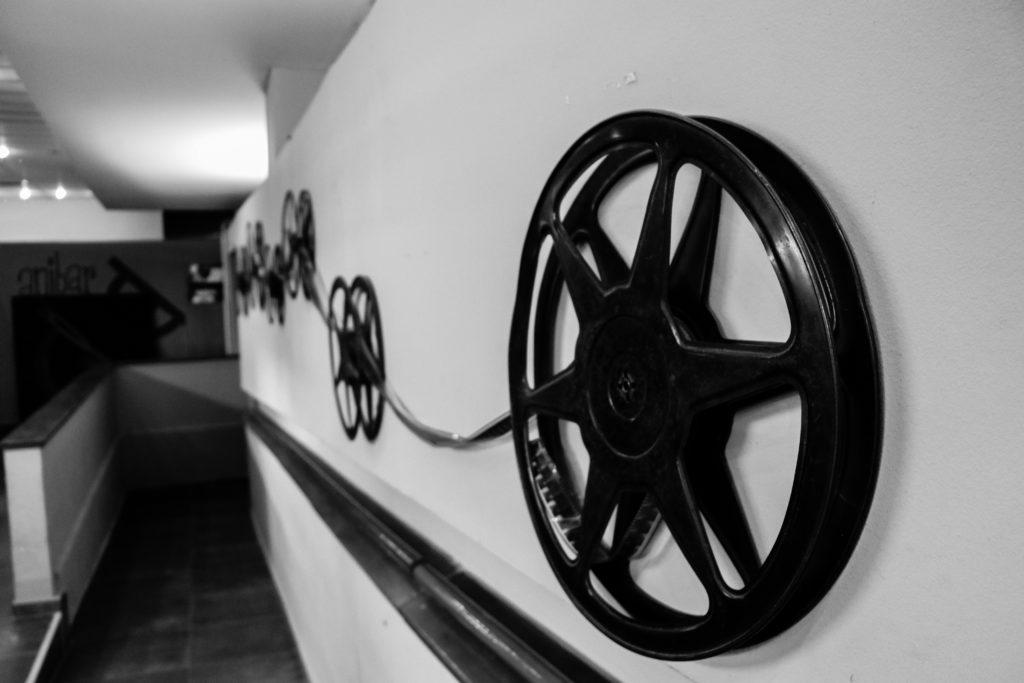
At the end of the ‘80s and beginning of the ‘90s, a series of events took place which precede the start of Yugoslavia’s disintegration.
These major breakthroughs and comprehensive political changes in former-Yugoslavia and the start of violence against and repression of Kosovo in particular – which in certain cases was accompanied by riots and protests – foreshadowed the beginning of the crisis which influenced the entire social and political field of the region. The Cinema of Peja could not escape the influence of this political and social crisis, since film screening stopped because Kosovo remained without any film distributers, considering that the cinema was still operating as an independent enterprise and their financial sustainability depended on ticket sales, the lack of film screenings also implied lack of financial means, and subsequently fewer activities.
Despite the lack of film screening, the cinema remained active with a few concerts and theatre shows. Some of the theatre shows were organized by some cultural artistic associations, such as: Rugova, Gora and others. There were also theatre shows curated by the actors of Gjakova’s theatre, which were organized on the anniversary of Albania’s independence . Another theatre show that attracted the greatest viewer attention was Faruk Begolli’s comedy “Profesor jam talent se jo mahi”.
In some specific cases, the cinema’s activities were interrupted, when organizers or even the performers were violently taken off the stage and were sent to police stations, where they were interrogated about the cinema’s activities, and in some cases they also suffered physical violence.
The cinema was closed in 1998, when the war officially started in Kosovo.
The text is detached from the publication on the history of the Cinema.
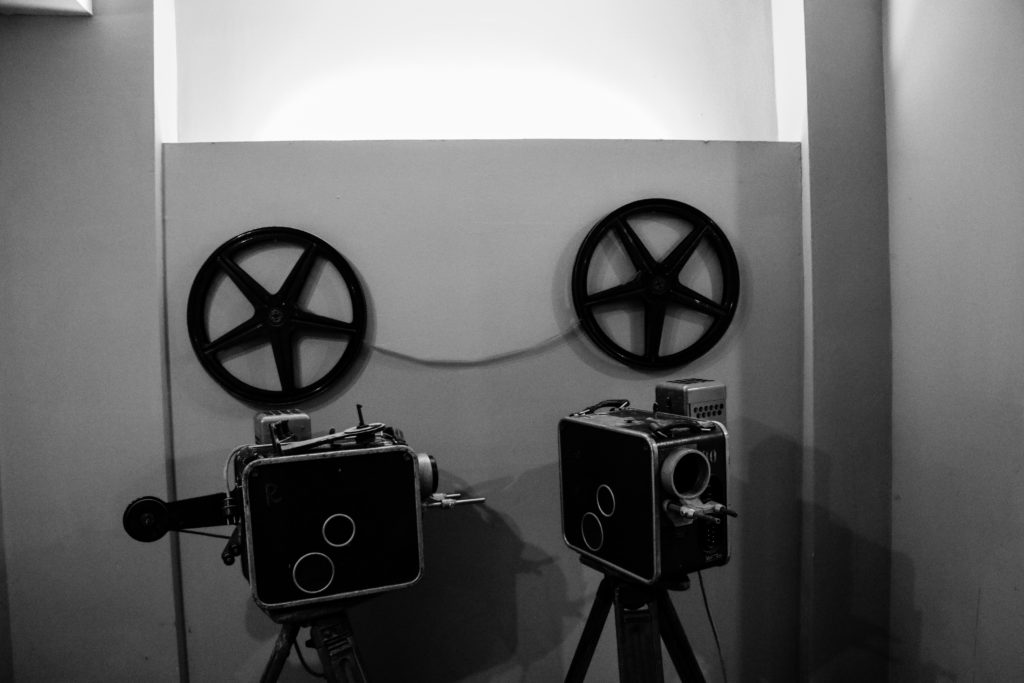
After the war ended in Kosovo in 1999, the largest part of the city of Peja was destroyed. The city cinema which was severely damaged shared the destiny of many buildings in the city of Peja. To reactivate it a considerable amount of money had to be invested to restore the majority of the building. The first donors were found in Italy, while the initial idea was to turn the cinema into a classical theater, since the building of the “Istref Begolli” Theater was under the Italian KFOR’s control.
Considering this situation, it was exactly the Italian KFOR together with UNMIK that enabled reaching an agreement for the cinema’s premises to be renovated as a multifunctional building, incorporating the cinema as well as the theatre.
The funding received in 2000 achieved the amount of 500 German Marks.
Thanks to this investment the entire building was renovated and the audio and projection equipment were changed. However, due to the renovation that was done, the building lost its shape and architecture of the time, thus the premise lost a part of its identity by decreasing the number of seats, omitting the side loggia and changing the structure of the stage completely.
Throughout the renovation process, the cinema was closed from July 1 2000 to be reopened on 22.02.2001.
After the building’s renovation, the cinema continued its activities. Two film screening agreements for 2001 appear in the Cinema’s archive.
In the course of the first decade of the new century, activities became increasingly sporadic, thus only having a few films which were not so highly evaluated and some rare inter-municipal events. This situation with a great lack of activities in the cinema continued almost until 2016, when Anibar officially started to manage the cinema, although it used the cinema throughout the festival since 2010.
The text is detached from the publication on the history of the Cinema.
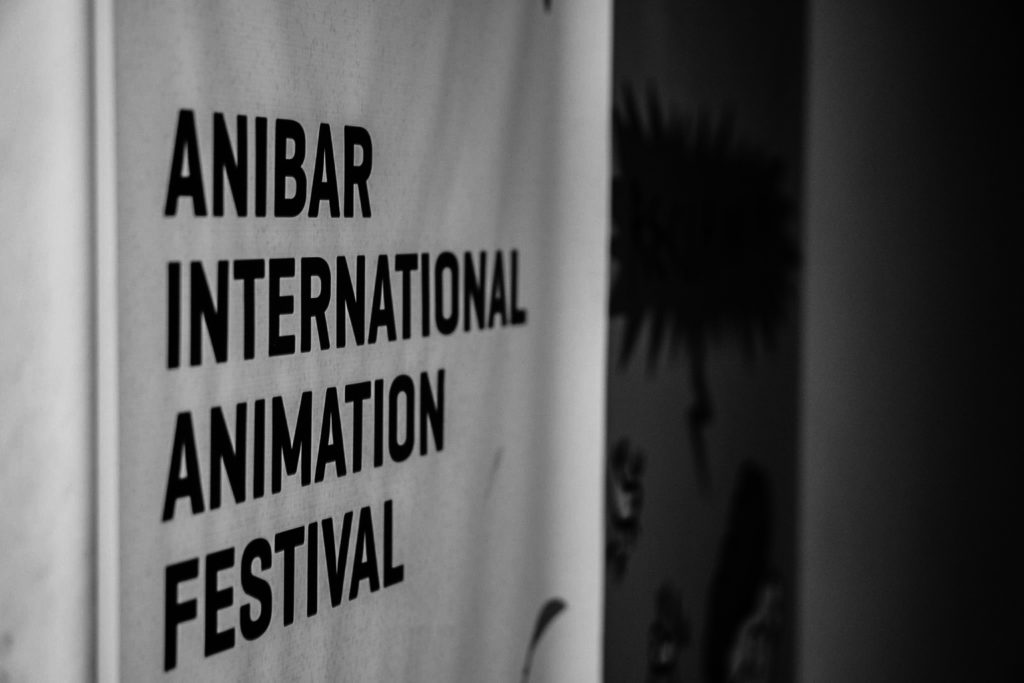
Anibar started negotiations with the Municipality of Peja since 2014 to increase the number of activities in the cinema, although Anibar had been using the cinema since 2010 for its activities during the festival period. It was not until 2014 that the cinema started to revive with programs, after the frequent negotiations with the Municipality of Peja, which revolved around the aim of increasing the number of the cinema’s activities which would simultaneously contribute to the revitalization of the building which had not been passive in years. When the negotiations with the Municipality of Peja, Anibar started creating annual programs.
In 2016, Anibar provided a 15-year program with activities whose aim was to revitalize the Cinema and revive cultural initiatives in Peja. The introduction of the program with educational activities influenced the initiation of the procedures for the use of public property. In the same year, the Municipal Assembly through a decision, gave the cinema to Anibar to use it for a period of 15 years. The program of activities that Anibar had presented included activities like: film screening, discussion panels and debates, concerts, not excluding different workshops and developing the Animation Academy.
The Cinema’s Annex where the offices of trade unions had been is currently used for workshops, the Animation Academy and similar activities.
Nonetheless, the only cinema of the city of Peja still does not operate with daily activities due to the lack of technical conditions, such as a digital projector which would enable screening newer films. Regardless of these difficulties, it may be said that “Jusuf Gervalla” Cinema is the most effective alternative source of educational-cultural programs.
The text is detached from the publication on the history of the Cinema.
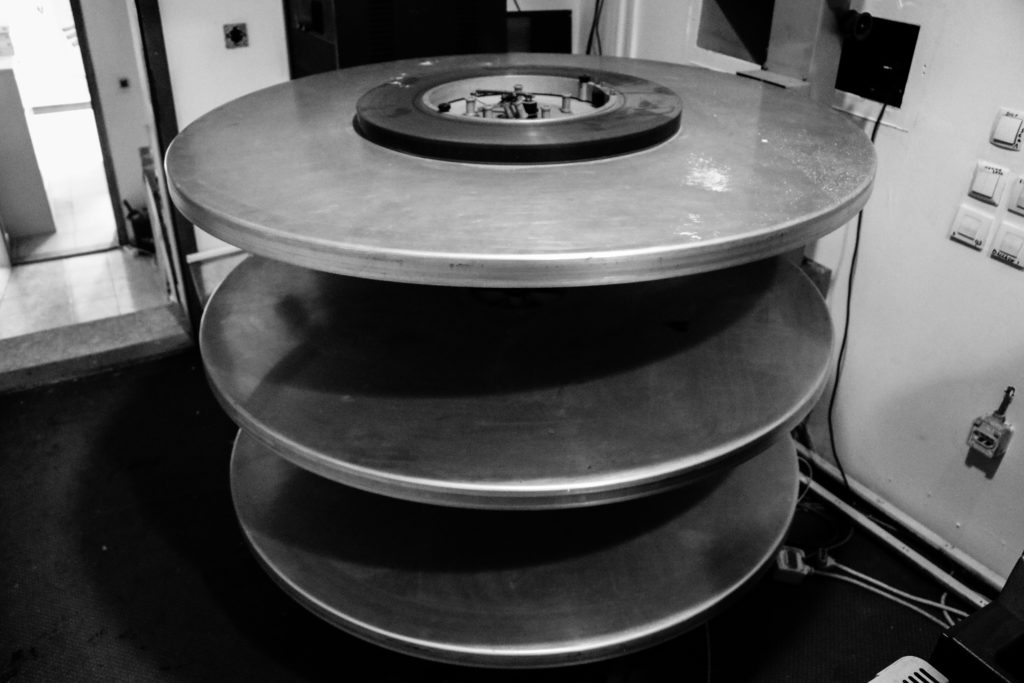
Among the assets inherited by Anibar is also the cinema’s archive, which contains film posters that were shown daily, catalogues, film leaflets; projection equipment such as two mobile projectors, three static tape projectors, some film tapes of the pre-war period in Kosovo, typing machines, ticket printing machines as well as some administrative documents.
Film posters were mainly American, European and Asian productions of different genres such as drama, comedy, romance, action, erotic, science fiction, documentaries, thriller, horror, children’s films, and date back to the 1950s until the end of the 1990s. A part of the posters is accompanied by film cards and brochures, which were distributed in different parts of the town to announce the next activity.
Posters vary as to the letter and format typology. Some of them also present illustrations. Part of the cinema’s archive are also documents and manuals on the use of equipment of the pre-war period, catalogues and inventories of different distribution houses of Yugoslavia of that time which provided the latest films of world cinematography.
Film catalogues are of a one-year time interval and contain data about the film genre, place and date of production, the producer, actors, duration, technique, distribution house, original language and present a short content of the films. Catalogues of film festivals, presenting participating films in those events, are also noticeable among them. Some of the catalogues, in addition to general data about films, also serve as inventories of films screened throughout a year in the cinema.
The text is detached from the publication on the history of the Cinema.
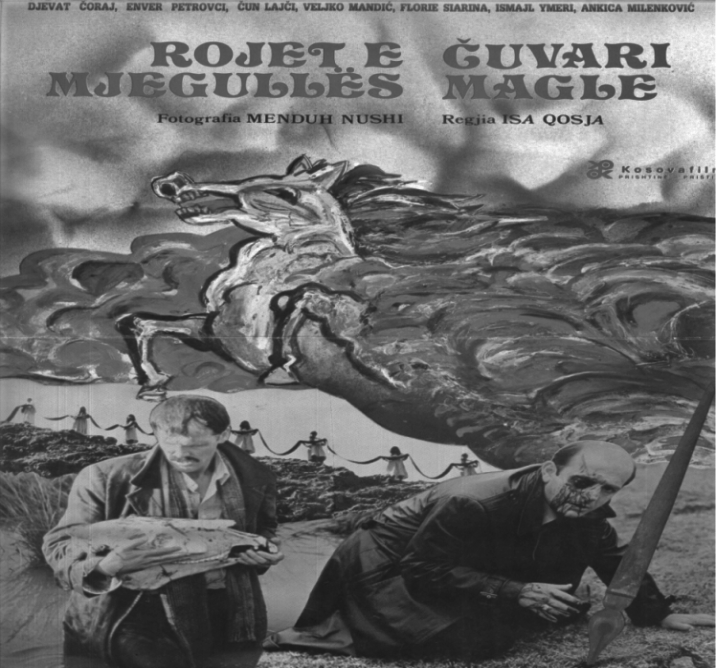
In the cinema archives, a special space is dedicated to the catalogs of film productions of "Kosova Film". "Kosova Film" as a film house was established on February 20, 1969 as an organization for the production, screening and distribution of films. It initially produced short films and documentaries and then continued with feature films. The establishment of independent production laid the foundations of original film production which represented local culture and tradition. The films produced by "Kosova Film" were co-produced with other film production houses. One of the films that has had the greatest success from the production of "Kosova Film" that was screened in the so-called Kino Radi at that time is "Rojet e Mjegullës" by the director Isa Qosja.
The Kosova Film Fund passed to the archive fund of the Kosovo Cinematographic Center (KCC).
The text is detached from the publication on the history of the Cinema.